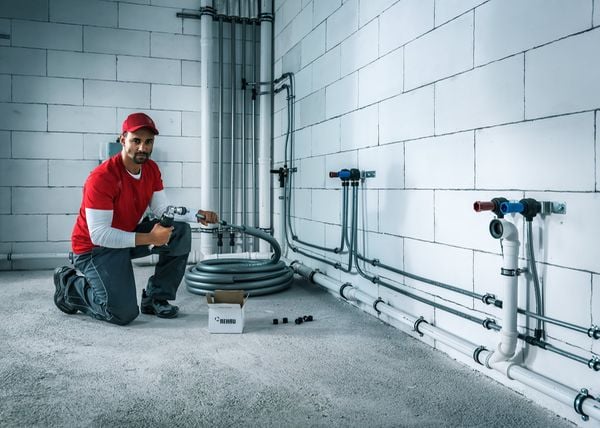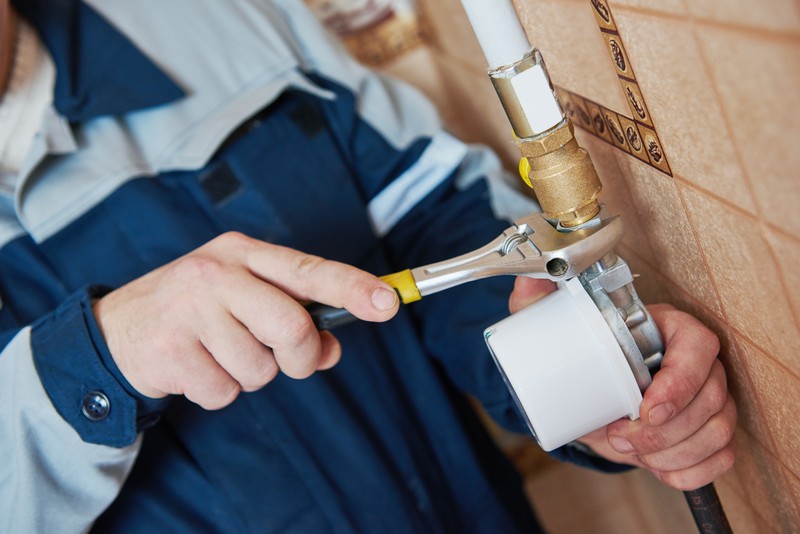What Lies Ahead in Plumbing: Developments and Advancements
What Lies Ahead in Plumbing: Developments and Advancements
Blog Article
Just how do you feel in regards to The Future of Plumbing: Trends and Innovations to Watch?

Introduction
The pipes sector is going through a transformative phase driven by technical advancements and expanding problems for sustainability and performance. This write-up discovers arising patterns and technologies shaping the future of pipes.
Regulative Landscape
Regulatory structures play an essential duty in shaping the adoption of plumbing technologies, with requirements and codes controling everything from water effectiveness to product safety and security. As modern technologies remain to develop, regulative bodies have to adjust to guarantee consumer protection and environmental stewardship.
Future Outlook
The future of pipes is identified by continued technology and combination with other sectors such as IoT, renewable resource, and structure automation. By embracing lasting methods, leveraging arising modern technologies, and prioritizing user-centric layout, the pipes sector is poised to address the progressing requirements of culture while reducing its ecological footprint.
Enhanced Reality in Pipes
Increased Reality (AR) innovation is revolutionizing plumbing by offering specialists with real-time visual support for repairing and repair tasks. AR-enabled smart glasses or mobile applications overlay electronic info onto the physical atmosphere, helping plumbing professionals envision pipe layouts, recognize concealed leaks, and perform repair work with precision.
Influence of 3D Printing
The introduction of 3D printing has introduced new opportunities in manufacturing plumbing components. From custom-made components to intricate pipeline installations, 3D printing allows for fast prototyping and on-demand production, lowering lead times and enabling greater personalization in plumbing design.
Health and Safety Features
In response to increased issues for health and safety, pipes fixtures are incorporating attributes such as antimicrobial surfaces, touchless operation, and self-cleaning mechanisms. These technologies not just improve hygiene but also promote user convenience and convenience.
Hygiene-focused Components
Touchless faucets, self-sanitizing commodes, and antimicrobial surface areas are becoming increasingly widespread in property and commercial settings, minimizing the danger of bacterium transmission and promoting a cleaner, healthier setting.
Water Quality Tracking
Developments in water top quality surveillance modern technologies make it possible for property owners to check the pureness and safety and security of their supply of water in real-time. Smart water high quality sensors can find impurities, pH degrees, and temperature variations, encouraging individuals to take positive steps to make certain water safety and security.
Remote Plumbing Providers
Remote diagnostics and digital support are reinventing the means plumbing solutions are supplied. With video conferencing and remote access technologies, plumbers can troubleshoot concerns, provide support for DIY repairs, and also carry out remote inspections, providing better access and ease to property owners.
Difficulties and Opportunities
While plumbing innovations hold immense promise, they additionally present challenges such as information privacy concerns, governing compliance, and the demand for labor force training. Resolving these difficulties calls for collaboration between market stakeholders and regulative bodies to make certain risk-free and liable application of brand-new modern technologies.
Smart Pipes Solutions
Including smart technology into plumbing systems enables remote tracking, leak discovery, and automated maintenance. Smart sensors and IoT (Internet of Points) tools enable home owners and plumbing technicians to keep an eye on water usage and find problems in real-time, resulting in more reliable resource administration and proactive upkeep.
Water Performance Solutions
With raising emphasis on water conservation, ingenious solutions are being established to minimize water wastage in plumbing systems. High-efficiency components, greywater recycling systems, and smart watering controllers are among the technologies assisting consumers reduce their water footprint while maintaining convenience and comfort.
Lasting Products
The shift in the direction of sustainability includes pipes materials, with a growing choice for environmentally friendly options. Biodegradable piping materials, such as PEX (cross-linked polyethylene) and HDPE (high-density polyethylene), deal longevity and resistance to corrosion without endangering environmental honesty.
Predictive Upkeep
Anticipating maintenance strategies leverage information analytics and artificial intelligence formulas to expect and protect against plumbing issues prior to they take place. By evaluating historic information and performance metrics, predictive upkeep formulas can recognize patterns and anomalies, allowing aggressive treatments to prevent expensive repair work and interruptions.
Conclusion
In conclusion, the future of plumbing is defined by a merging of innovation, sustainability, and user-centric style. By welcoming wise options, lasting materials, and aggressive upkeep methods, the pipes sector can improve performance, promote safety and security, and contribute to a much more sustainable future.
Plumbing Industry Trends You Need To Know
Smart technology in plumbing
Homeowners want to be able to manage their homes from their phones. The technology exists to make that happen. From smart toilets to leak detector devices, the whole plumbing system can be managed on an interconnected network made up of sensors, IoT devices, and machine learning algorithms.
This allows for wireless control to turn appliances on and off, automate routines, and access advanced monitoring to track water usage and flag potential issues. Smart technology streamlines water consumption, maintenance and energy usage, creating a more efficient system.
Green plumbing
The data analysis possible with smart technology not only improves convenience and cost-effectiveness but also fulfills a high-priority customer desire – sustainability. Consumers are very aware of their impact on the planet and want plumbing solutions to reduce damage and support sustainability. Eco-friendly plumbing solutions are already starting to emerge.
Customers can opt for low-flow toilets, water-saving faucets, and connections to sustainable energy sources. Beyond monitoring water consumption, customers can conserve water through the installation of greywater systems. This is a system that collects water that has been used but is still clean enough for some household uses such as toilet flushing.
Shorter product pipeline
To keep up with modern plumbing, plumbers need modern tools that enable them to complete jobs more efficiently. One technology making strides in this area is 3D printing. By 3D printing key plumbing fixtures, plumbers can reduce wait times even for specialized fixtures. It minimizes delays often seen in traditional manufacturing that frustrate customers and prevent plumbers from taking on more work.
Off-site repairs
Augmented reality is making a splash in many industries including plumbing. Plumbers can map a building online so they can explore the plumbing system through augmented reality, identifying areas of maintenance and repair completely digitally. This technology can be applied quite widely in plumbers’ work including planning installations and training new recruits. It’s safer, smarter and more efficient.
Low-footprint materials
Another way for plumbing companies to reduce their environmental footprint and meet the customer demand for sustainability is by using recycled materials in their work. The products they source and manufacture such as pipes, fixtures and faucets can be made from recycled materials. This saves the planet while being just as effective.
Onsite water purification
Additionally, plumbing companies can be advocates of water conservation and ease the financial and environmental concerns of customers by offering water purification systems. New water purification technology such as reverse osmosis systems and UV systems make it possible for homeowners and business owners to thoroughly cleanse water, removing contaminants onsite. This means the water can be safely reused in more ways than greywater can be, establishing a water recycling loop.
Tankless water heaters
Another innovation of modern plumbing is tankless water heaters. The idea is that the water is heated on demand as it runs through the system instead of being heated in a water tank. This is more energy efficient and therefore cost-effective and eco-friendly because water isn’t heated needlessly.

Hopefully you enjoyed reading our piece about . Thanks for taking time to read through our blog. Liked our entry? Please quickly share it. Let other people find it. Thanks for your time. Please check our blog back soon.
Quote Report this page